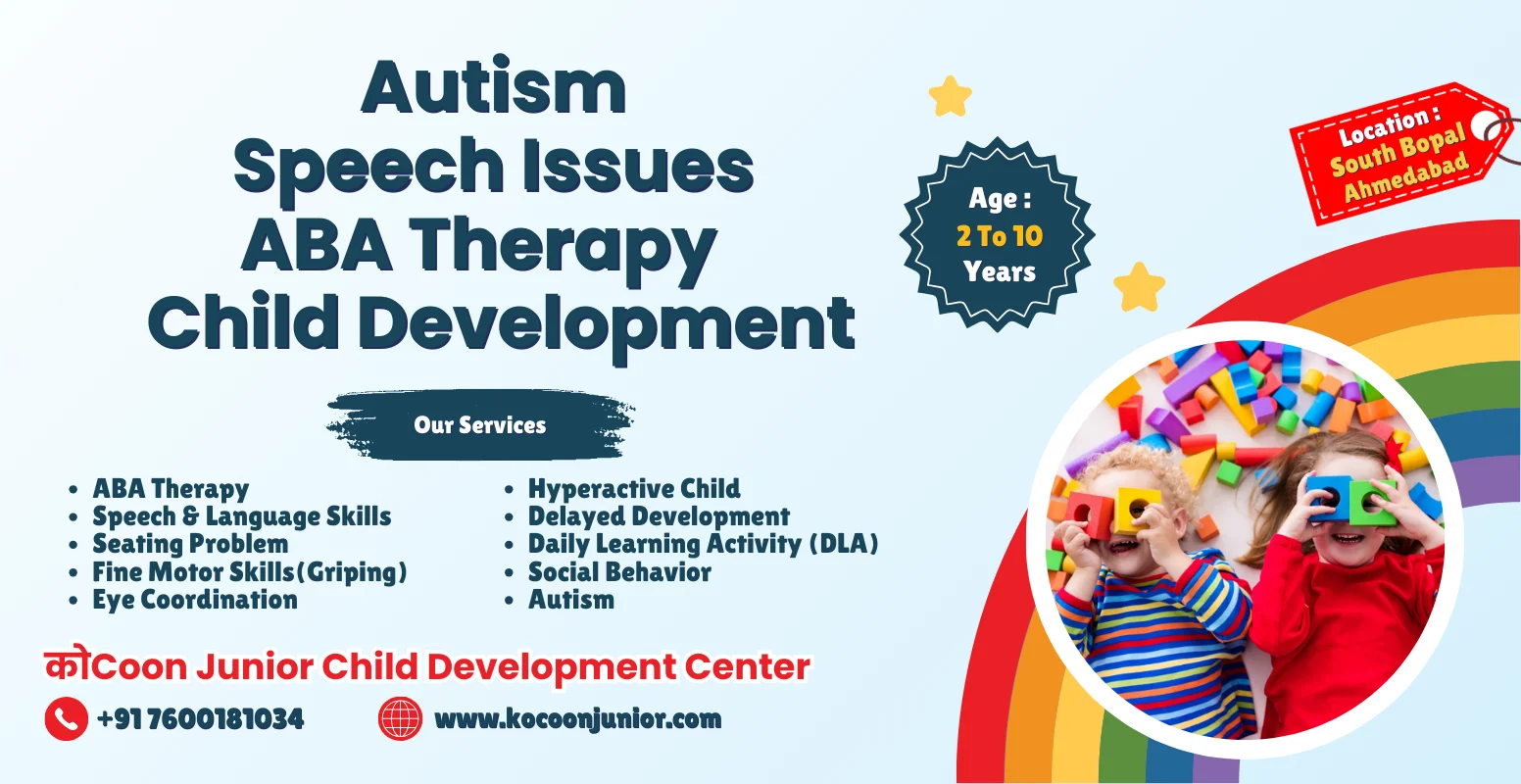OUR BLOG
Child Development

Understanding Autism: A Caring Guide for Parents
Autism (or au ti sm / Autism Spectrum Disorder – ASD) is a developmental condition that affects how children think, communicate, and relate to the world. It is not a disease, but a variation in development—with unique strengths and challenges (World Health Organization, 2021).
Why Autism Matters for Parents
Globally, autism is more common than many parents realize. In 2021, the World Health Organization estimated that about 1 in 127 persons had autism (World Health Organization, 2021). A systematic review updated in 2022 found that approximately 0.77% of children worldwide are diagnosed with autism (Zeidan et al., 2022). In India, a large-scale population study suggested that about 1 in 65 children between 2–9 years may have autism (Arora et al., 2018). However, community-based studies sometimes report lower numbers due to underdiagnosis (Raina et al., 2015).
Early Signs of Autism in Children
Parents often notice early signs of autism in the first years of life. These may include:
- Delayed speech or limited gestures
- Difficulty maintaining eye contact
- Repetitive behaviors such as hand flapping or lining up toys
- High sensitivity to sounds, lights, or textures
- Challenges in imaginative play or engaging with peers
Spotting these signs early and seeking expert guidance is key to timely support (CDC, 2025).
Why Early Support Makes a Big Difference
Research consistently shows that early intervention has the most impact. Early support helps children develop critical skills when the brain is most adaptable. At Kocoon Junior Child Development Centre, we use a multi‑modal approach to support autistic children:
- Speeching therapy near me / speech therapy
- Applied behavior analysis (ABA applied behavior analysis)
- OT occupational therapy / therapeutic therapies
- Special education
These therapies strengthen developmental skills, improve growth and development, and support better inclusion in schools and education.
The Parent’s Role in Autism Support
Parents are essential partners in their child’s journey. Here are some ways they can help:
- Practice speech and social skills at home
- Create structured routines to reduce anxiety
- Celebrate small wins and progress
- Work closely with therapists and share observations
- Stay informed and positive (National Institute of Mental Health, n.d.)
Parental involvement significantly increases the effectiveness of therapy.
Common Myths About Autism
There are still myths about autism that can create unnecessary fear:
• 'Autism is caused by vaccines' — Scientific research confirms there is no link (WHO, 2021).
• 'Autistic children cannot improve' — With the right support, children can grow remarkably (Zeidan et al., 2022).
• 'They cannot feel love' — Many autistic children express deep emotional connections (NIMH, n.d.).
Looking Ahead: Hope for Parents
Autism is a lifelong journey, but it is also filled with opportunities to nurture unique strengths. With early identification, structured support, and family involvement, children with autism can thrive and lead fulfilling lives.
If you suspect your child may show signs of autism, early help can make a life-changing difference.
📞 Call us at 7600181034 to explore Speech Therapy, ABA Therapy, Occupational Therapy, Special Education, & more at KOCOON Junior Child Development Centre (Shela, South Bopal, Sanand, Ahmedabad).
🌐 Website: www.kocoonjunior.com
📲 Instagram: @kocoonjunior
📘 Facebook: @kocoonjunior
▶️ YouTube: @kocoonjunior
References
World Health Organization. (2021). Autism spectrum disorders. World Health Organization. Retrieved from https://www.who.int/news-room/fact-sheets/detail/autism-spectrum-disorders
Zeidan, J., Fombonne, E., Scorah, J., Ibrahim, A., Durkin, M. S., Saxena, S., Yusuf, A., Shih, A., & Elsabbagh, M. (2022). Global prevalence of autism: A systematic review update. Autism Research, 15(5), 778–790. https://doi.org/10.1002/aur.2696
Arora, N. K., Nair, M. K. C., Gulati, S., Deshmukh, V., Mohapatra, A., Mishra, D., & Divan, G., et al. (2018). Neurodevelopmental disorders in children aged 2–9 years: Population-based burden estimates across five regions in India. PLoS Medicine, 15(7), e1002615. https://doi.org/10.1371/journal.pmed.1002615
Raina, S. K., Kashyap, V., Bhardwaj, A. K., Kumar, D., & Chander, V. (2015). Prevalence of autism spectrum disorders among children (1–10 years of age): Findings of a mid-term report from Northwest India. Journal of Postgraduate Medicine, 61(4), 243–246. https://doi.org/10.4103/0022-3859.166512
Centers for Disease Control and Prevention. (2025). Data and statistics on autism spectrum disorder. U.S. Department of Health & Human Services. Retrieved from https://www.cdc.gov/autism/data-research/index.html
National Institute of Mental Health. (n.d.). Autism Spectrum Disorder. U.S. Department of Health and Human Services. Retrieved from https://www.nimh.nih.gov/health/topics/autism-spectrum-disorders-asd